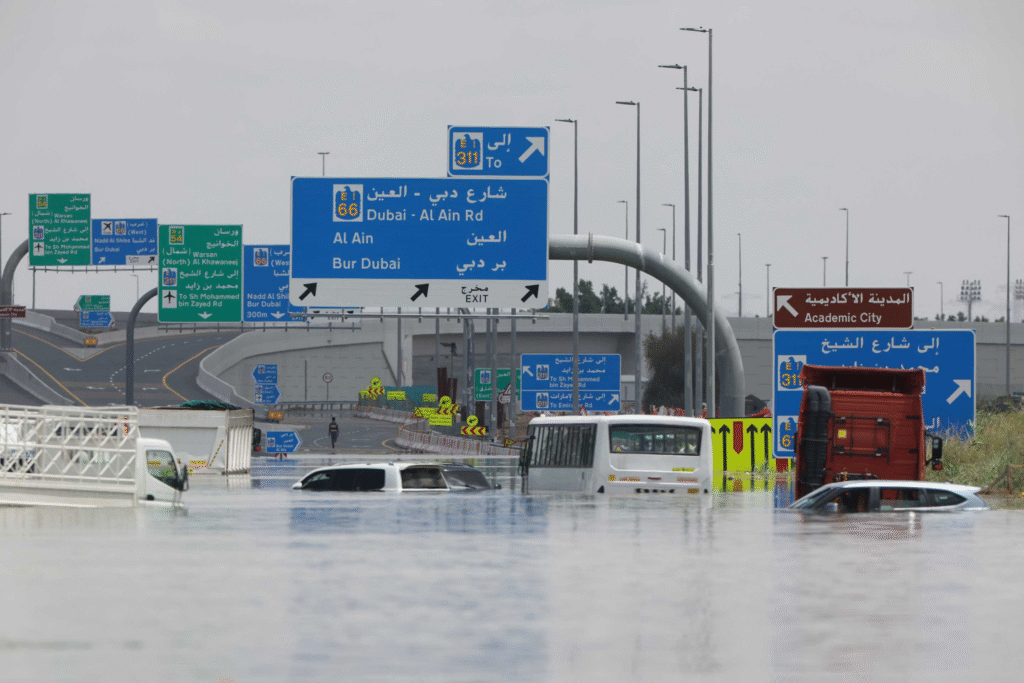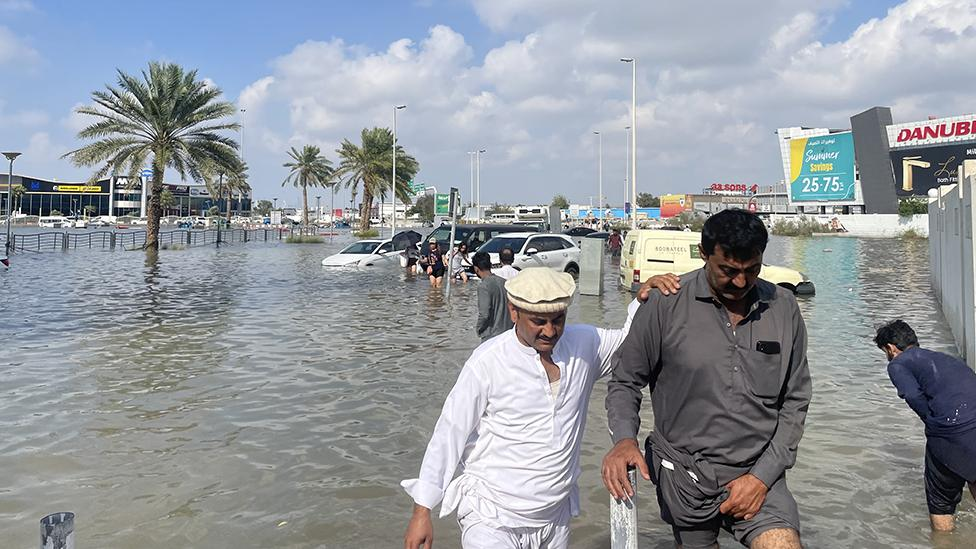Now Reading: UAE Battles Worst Flooding in Decades—Shocking Scenes Shared Online 2025!
-
01
UAE Battles Worst Flooding in Decades—Shocking Scenes Shared Online 2025!
UAE Battles Worst Flooding in Decades—Shocking Scenes Shared Online 2025!

Table of Contents
The United Arab Emirates (UAE), famous for its shining skyscrapers, luxury lifestyle, and desert beauty, recently witnessed an unexpected natural disaster—flooding caused by heavy and continuous rainfall. This rare weather event turned roads into rivers, stranded thousands of residents, canceled flights, and caused major disruptions across cities like Dubai, Abu Dhabi, Sharjah, and others.
Unusual Rainfall Leads to Flash Floods

In mid-June 2025, the UAE experienced an unusual amount of rain, much higher than average for the region. Typically known for dry and sunny weather, the sudden downpour shocked both citizens and officials. Weather experts confirmed that the country received over 120 mm of rain within 48 hours, a record-breaking number for this time of year.
This heavy rainfall resulted in flash floods across urban and rural areas, with water filling streets, underground parking lots, and highways. Videos and photos shared on social media showed cars almost completely submerged and people wading through waist-deep water to reach safety.
Major Cities Severely Affected
Dubai: A City Under Water
Dubai, one of the world’s most visited tourist cities, saw some of the worst impacts. Popular areas like Sheikh Zayed Road, Business Bay, and Jumeirah were heavily flooded. Metro services were delayed, flights from Dubai International Airport were canceled or postponed, and several shopping malls closed early due to safety concerns.
Residents described the situation as “unbelievable” and “like a scene from a disaster movie.” Emergency services worked day and night to rescue stranded people, unblock roads, and drain water from low-lying areas.
Abu Dhabi and Sharjah: Flood Emergency Declared
In Abu Dhabi and Sharjah, the situation was no better. Authorities declared a flood emergency, warning residents to avoid unnecessary travel and stay indoors. Schools and offices switched to remote learning and work-from-home modes to ensure public safety.
Several housing societies in suburban areas reported power cuts, water shortages, and damage to property. Social media platforms were flooded with complaints about leaking ceilings, fallen trees, and broken infrastructure.
Transportation and Air Travel Disrupted
One of the most immediate effects of the flooding was the severe disruption to transportation. Flights at Dubai and Abu Dhabi airports faced long delays or cancellations. Travelers were stranded for hours, and many reported sleeping at terminals because of uncertain departure times.
Road travel also became risky as waterlogged streets and poor visibility caused multiple accidents. Delivery services, ride-hailing cabs, and public buses suspended operations in flooded zones.
The UAE government issued multiple alerts on weather apps, advising people to stay indoors, stock essential supplies, and avoid coastal or low-lying roads.
Government and Rescue Efforts in Full Swing
The UAE authorities, along with civil defense teams, were quick to respond. Over 5,000 emergency personnel were deployed to assist in rescue operations, clear roads, and pump out water from flooded areas. Special rescue boats were used in severely affected zones.
Crown Prince Sheikh Hamdan bin Mohammed personally visited some of the affected areas and assured citizens that the government was doing everything possible to restore normal life. He also announced financial aid packages for families whose homes and vehicles suffered severe damage.
In a public statement, the UAE’s National Emergency Crisis and Disaster Management Authority (NCEMA) said:
“We are working with all departments to ensure the safety of residents. Necessary measures are being taken to prevent future flooding.”
Why Did This Happen? Experts Explain
Climatologists believe that the flooding may be linked to changing weather patterns caused by global warming. Unusual moisture build-up in the atmosphere and rare weather conditions resulted in this unexpected storm system over the Arabian Peninsula.
Experts warn that if climate change is not addressed, such extreme weather events could become more common, even in countries like the UAE which are not used to heavy rainfall.
Public Reaction and Social Media Buzz
The floods triggered an emotional response online. Hashtags like #UAERain, #UAEFloods, and #DubaiRain trended on Twitter, Instagram, and TikTok. While some shared shocking visuals of submerged roads and buildings, others appreciated the quick response of emergency services.
One Dubai resident tweeted:
“Never thought I’d see my street turned into a river. Hats off to the rescue teams working non-stop!”
However, some users raised concerns about the city’s drainage system and questioned why such a wealthy country could not prevent this level of flooding.
Economic and Business Impact
Experts estimate that the floods could cost millions of dirhams in damages, affecting businesses, transportation, and infrastructure. Hotels, restaurants, and retail stores faced losses as customer footfall dropped sharply.
Construction projects also came to a halt, causing delays and extra costs for developers.
What Next? Precautionary Steps and Future Plans

In the coming days, weather agencies predict the rains will reduce, but waterlogging and damaged roads will continue to disrupt life. The government has promised to review drainage infrastructure and invest in flood prevention projects to avoid such disasters in the future.
Authorities urged residents to:
- Stay updated via official weather apps and websites
- Avoid unnecessary travel until all roads are cleared
- Report fallen trees, damaged electric poles, or open manholes to emergency numbers
Conclusion: A Wake-Up Call for the UAE?
The recent floods in the UAE have highlighted the importance of climate preparedness, even for desert nations. As weather patterns change globally, countries like the UAE must invest in climate-resilient infrastructure and early warning systems to protect their growing cities and residents.
For now, the focus remains on recovery, repair, and ensuring that life returns to normal as quickly as possible.
Read More:- Shobha Realty Launches Its Most Luxurious Project Yet—Full Details Inside 2025




















